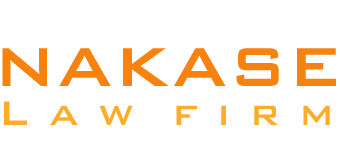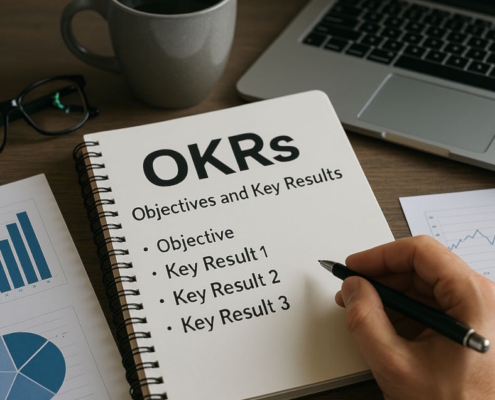What is the difference between an NNN lease and a gross lease?
There are a variety of business leases that you could encounter while looking for an office. The most common types of leases are gross leases and triple net leases, sometimes known as NNN leases. Although they are similar, there are crucial distinctions between the two that you should be aware of when looking for a property.
The main reason for having multiple kinds of leases is to allocate the costs of managing the property in various ways. Before signing a lease, be sure you know who is liable for what.
How then are gross leases different from triple net leases? First, let’s simplify the question so we can get into the specifics.
What does a lease mean?
A lease is an arrangement between an asset’s owner (the lessor) and an entity seeking use of that asset (the lessee) in exchange for payment. Vehicles, land, houses, equipment, and even office space can all be considered assets.
Property leases, and more especially business leases, are the subject of this article. There are a variety of leases on the table, and each one uses a somewhat different formula to determine who is responsible for what in terms of building expenditures and risk.
You are likely to find that no one form of lease is better or less expensive overall since market forces tend to balance out the cost disparities between each type of lease arrangement over an extended period of time. Whether you’re a landlord or a renter, the best option depends on your specific situation and the general direction of the real estate market.
What factors affect the rent?
Whether the lease is a gross or net one, the standard method of determining rent is to establish a price per square foot, either monthly or annually. The term for this is “base rent.” Rather than utilizing useable square footage (USF), landlords usually use rentable square feet (RSF) to determine base rent. RSF includes all of a property’s indoor area. This implies that the space may have utility closets or support pillars that would normally be considered “unusable” and limit the tenant’s ability to operate their business. All internal space, excluding non-tenant sections, is considered USF.
The tenant will pay $45,000 per year in basic rent if the lease is for 3,000 RSF and the annual rate is $15 per square foot. The base rent for the renter will be $3,750 per month.
There is often an escalation clause in leases as well. To compensate for the ever-increasing cost of the building, this provision boosts the rent annually. Depending on whether the landlord’s expenditures have increased or decreased, the amount might be more variable when the landlord and renter discuss this increase at the conclusion of each financial year. When signing the initial lease, the landlord and renter may also agree to a set rent increase. We refer to this as a “step increase.”
It is possible for the landlord and tenant to reach an agreement to prolong the lease term after it has ended. They will discuss the increased rent and the duration of the lease extension. The process of adding a fixed extension is simple. In other words, there will be an annual rent rise of a certain percentage or sum. Extensions of leases based on fair market value (FMV) are more typical. Instead of using a predetermined sum, the rent for an FMV extension will rise according to the going rate for a comparable space in the market when the landlord and tenant negotiate the extension.
Whether your lease is gross or net determines how much additional rent you will have to pay.
Various leasing arrangements
1. Triple net lease (NNN)
Tenant contributions to a triple net lease include not just the monthly rent but also the principal amount, as well as the costs of insurance, property taxes, and maintenance of shared areas.
2. Absolute net lease
The tenant bears nearly all of the costs under an absolute net lease. All of the aforementioned expenses, including the base rent, are part of the triple net lease. Furthermore, the renter is liable for the cost of any substantial property repairs, including but not limited to roof, structural, and window replacements.
3. Modified gross lease
Lessees and landlords can work together more easily and creatively in a modified gross lease. While the specified rate under a modified gross lease covers everything from the base rent and common area upkeep to property taxes and building insurance, it usually does not include the cost of utilities or other expenses.
4. Full-service lease
In a full-service lease, which is a gross lease, the tenant pays the landlord a single amount that goes toward covering all of the costs associated with running the property. Everything from the monthly rent to repairs, taxes, insurance, and utilities are part of this.
What is a NNN (triple net) lease?
If you’re looking for commercial real estate, you’ll mostly see triple net leases. Tenants under this form of lease are also liable for three net charges in addition to the base rent. All of these things add up: taxes, upkeep, and insurance.
As an alternative to a gross lease, a triple net lease allows the landlord more leeway in how they spend the money they collect from tenants in order to meet their own operating costs.
Operation of a triple net lease
The extra monthly expenses of insurance, taxes, and maintenance are typically proportionate to the tenant’s part of the entire building under a standard triple net lease. It pays for the base rent and the three nets at the same time. This doesn’t always happen. The tenant may be liable for the extra costs on a quarterly or yearly basis under some triple net leases.
Pass-through costs
All three of the “N’s” in a triple net lease stand for the three additional costs that the renter is responsible for paying. The renter has more say over the kind of service they receive and the extent to which their money is spent when they pay for these expenses directly.
- Maintenance: The costs associated with cleaning, renovating, and repairing the building’s common areas, including lobbies, elevators, parking lots, bathrooms, and corridors, are known as common area maintenance.
- Taxes: The local government receives property taxes, which are usually proportional to the property’s worth, to pay for the public expense of maintaining the building and the community. It covers the cost of maintaining public services including roads, garbage collection, police, and fire departments.
- Insurance: In the event of unforeseen occurrences such as flooding, fires, or storm damage, the owner of the property is protected by building insurance from the financial burden of rebuilding or repairing the asset. Liability insurance, which pays for medical expenses in the event of an accident that occurs on the property, is another option.
Estimates for a triple net lease
Listings for office space that are triple net often include the base rent. Commercial properties often have their asking rent or selling price stated as “$32 per foot, triple net” or “$32/sq ft/year, NNN.” If these figures are missing, you may need to inquire with the property owner or agent about the pass-through costs. It is common practice to provide them in addition to the regular rent per square foot.
The benefits and drawbacks of a triple net lease
The benefits
- Less work for the property owner. Landlord doesn’t have to micromanage these aspects of the lease on a monthly basis because tenant pays for taxes, building insurance, and common area maintenance.
- The landlord receives passive revenue. Triple net leases are perfect for landlords looking to establish a steady flow of passive rental revenue since they need less active management than gross leases. The lessor is responsible for paying any unforeseen costs. While all commercial real estate leases will eventually cover operating costs, landlords can avoid temporary swings in property taxes and maintenance expenses by securing a triple net lease.
- Reduced monthly rent for the renter. Typically, the base rent in a triple net lease is cheaper than in other forms of leases due to the tenant bearing all of the building’s expenditures.
The drawbacks
- Joint costs may go up. The amount of money that one tenant is responsible for paying toward the building’s shared expenditures can go rise quickly if the building’s triple net lease isn’t well-written.
- Exorbitant expenses for the renter’s renovations. The tenant is essentially on the hook for any refurbishment expenditures due to expense passing through from the landlord to them, rather than seeing a little rise in rent over the course of the lease.
Advantages of a Net Lease for the Renter
The renter may not benefit much from this lease arrangement at first glance. They still have to pay rent, but they’re also taking on most or all of the running expenses, depending on the net lease they signed.
Cost transparency is one of the benefits for the renter, though. A gross lease exempts tenants from paying for any additional charges, but they also have no clue if they’re paying too much for anything. The net lease gives the renter a lot more leeway to manage these costs and make smarter financial decisions.
With net leases, tenants also have greater say over any extra expenses. Tenants can keep any savings they make from cost-cutting landscaping services or from bundling insurance premiums for their many rental properties.
One other perk is a cheaper base rent. Because of the reduced base rent, a tenant who closely monitors their running expenses may find that their annual outlay is even lower than under a gross lease.
Positive Aspects of Net Leases for Property Owners
In a net lease, and especially in a triple net lease, the landlord does gain the most. Tenant pays the majority of operational expenses under a triple net lease. The landlord benefits greatly from this form of lease since their revenue from the rental property is far more stable and not affected by fluctuations in their operational expenses. Using triple net leases at multiple properties greatly improves a landlord’s ability to properly predict income.
When a landlord signs a triple net lease, they are essentially investing in a property that is ready to go.
Contrarily, it might result in lower profits for the landlord compared to a gross lease. The tenant, not landlord, stands to gain, say, from a drop in operational expenses.
What does a gross lease mean?
Rent in a gross lease is one simple, all-inclusive number. Because the renter pays a flat payment that includes their basic rent in addition to the typical NNN charges that were described before, this method of determining what the landlord is owed is a more easy approach by comparison.
Operation of gross lease
The rent under a full-service gross lease covers everything, including the utilities. The renter may better plan their budget and avoid unpleasant surprises by not having to worry about the fluctuating expenses of utilities like water and electricity.
The only costs included in a modified gross lease are the basic rent and the NNN charges; nevertheless, the tenant is responsible for paying for utilities and any other additional costs.
Quotes for gross leases
A single sum per square foot is the standard way to quote a gross lease. The modified gross or full-service status of the lease will likewise be readily apparent. A gross lease may read something like “$40/sq ft/year, modified gross.”
Benefits and drawbacks of a gross lease
The benefits
- Increased rent for the property owner. The landlord receives a larger sum in rent when a gross lease incorporates all of the building’s significant expenditures into one quotation. Landlords have more control over maintenance expenses as they are responsible for paying for and overseeing the building’s repairs.
- Specific amount due each month from the renter. If a full-service lease covers everything, the renter shouldn’t have to worry about price fluctuations over the term. Tenants under modified gross leases still have a lot more financial stability than those in triple net leases, even if the cost of metered utilities will vary from month to month.
The drawbacks
- Tenant pays a higher rent. As a renter, you should expect to pay a higher rent, which is the logical consequence of the previous point. The renter receives protection from the ever-changing maintenance, tax, and insurance costs in return for this.
- The landlord incurs unforeseen costs. The landlord is liable for all expenses, including common area maintenance (CAM) fees, in a gross lease. The burden falls on the landlord if these costs unexpectedly escalate, for example, due to the need to repair an elevator or an increase in energy rates.
The Tenant’s Advantages with a Gross Lease
Tenants choose gross leases because they know their monthly expenses will be a flat rate. Because of this, budgeting for the year is not too difficult. Tenants who opt for gross leases don’t have to worry about things like utilities or sudden changes in property value that might drive up their taxes.
A startup company may benefit greatly from a gross lease. Using a gross lease could make it easier to cope with expenditures for someone beginning a business or renting a property for the first time. If you rent more than one place, a gross lease might also be a good idea. Working with a single sum across many properties makes determining expenses much easier than doing individual calculations for each rental property.
A tenant may find itself in a difficult financial position if they are paying more under a gross lease compared to another site or under a net lease, even when operational costs have decreased. Make sure you aren’t spending more than necessary when you sign a gross lease so you can plan ahead for your monthly payments.
The Landlord’s Advantages with a Gross Lease
Although renters often see gross leases as more tenant-friendly, landlords may also get certain benefits. To start, it’s always the case that gross leases have more rent than net leases. Because, as is immediately obvious, the gross lease already covers the vast majority of operational expenses. On the other hand, the landlord estimates future costs while deciding on the rental charge. Landlords may sometimes put the burden of protecting themselves on tenants by inflating the fees. Although the tenant’s payment remains unchanged, the landlord reaps the advantages of any savings that result from real expenditures being lower than expected.
Let’s say that the price of energy goes down or that the cost of property insurance goes down from what it was the previous year. The owner could possibly discover a different, cheaper cleaning service. In the end, the savings go straight to the landlord.
Landlords may find themselves burdened by gross leases in the event that operational expenses such as CAMS or property taxes see a significant increase. All of these additional expenses will be the landlord’s responsibility if the lease doesn’t already cover them.
The differences between a gross lease and a triple net lease
First, let’s go over the basics of gross leases and how they differ from triple net leases.
The tenant under a triple net lease pays less in base rent but takes on more risk in managing the property. The ability to earn more predictable rental revenue while taking a hands-off approach to property care is what makes triple net leases appealing to owners with big portfolios.
The renter reaps benefits when they shoulder the responsibility of property management on their own. In a triple net lease, the tenant is free to cut costs as they see fit by auditing CAM providers and hiring their own contractors. On the other hand, in a gross lease, the landlord would be responsible for paying for any unforeseen repairs or other unpleasant shocks, but here the burden is on the tenant.
The tenant pays a higher base rent in a gross lease since the landlord pays for all the expenditures connected with running the property. Metered utilities, including water and power, are among the costs that a tenant may be responsible for paying for under a modified gross lease. With operational expenses no longer an issue, the tenant’s budget becomes much easier to manage. But it also eliminates the tenant’s control over the operational expenses.
Both forms of leases have their advantages and disadvantages. The risk is transferred to the tenants in triple net leases, which are often in the landlord’s favor. On the other hand, full-service and modified gross leases are mutually beneficial and may be worked out to find a happy medium. The easiest way to figure out which lease arrangement is right for your company is to work with a real estate agent who can explain the differences between the various options and help you decide what kinds of obligations you’re ready to take on.






























